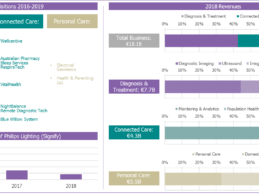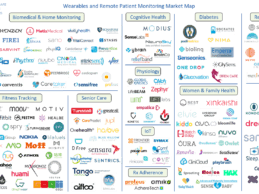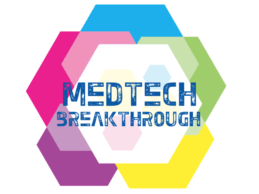It’s a fact. The more bandwidth-intensive connected medical devices and mobile devices our hospitals deploy, the more we are straining our health IT infrastructures. Something has to give. Many communications leaders see 5G technology’s real-time high bandwidth and lower latency access as powerful new technology features that are needed to expand healthcare applications’ capabilities and the functioning of medical devices, robotics, and mobile devices. Some say 5G will be transformative. Others
Read More
Patient Monitoring
Can AI Transform Patient Care from Reactive Craft to Strategic Art?
Personalized Analytics is becoming essential in healthcare, stemming from the movement from fee-for-service to a value-based market. The need to preempt and prevent disease on a more personal level, rather than merely reacting to symptoms, has created a significant opportunity for machine learning-based applications. This “analytics of one” approach (using advanced mathematical models and artificial intelligence techniques) is already impacting several key areas:
1. Medical imaging is utilizing
Read More
Consumers Willing to Utilize Medical Wearables to Avoid Physician Visits
Consumers are willing to utilize medical wearables to overcome barriers to seeing a physician, including distance and cost, according to a recent survey by VivaLNK. The survey reveals that of 100 participants ages 40 and over, 64 percent said they would utilize a wearable health monitoring device if it meant it could reduce the number of times, they had to physically visit a doctor or hospital.3 Factors Driving Patient’s Desire to Reduce Physical Physician AppointmentsThe survey determined there
Read More
Analysis: Philips’ Evolution to a Pure-play Healthcare Technology Vendor
The last two-to-three years we have seen Philips complete its transformation into a pure-play healthcare technology vendor. It has reduced its interest in its remaining non-healthcare business Philips Lighting/Signify (now owning only a 16.5% share), made 16 healthcare technology acquisitions since the start of 2017 and organized its internal business units into three core healthcare technology segments, Personal Health, Diagnosis & Treatment and Connected Care. A few weeks ago, several of
Read More
NewYork-Presbyterian Launches $50M Hauser Institute for Health Innovation
NewYork-Presbyterian has announced the launch of The Hauser Institute for Health Innovation, in recognition of the visionary philanthropy of Rita E. Hauser and Gustave M. Hauser. The Hausers have given more than $50 million to NewYork-Presbyterian in support of the Hospital’s innovation programs in health information technology and telemedicine since 2011.Hausers’ Philanthropy Led to Creation of NYB OnDemandThe Hausers’ previous philanthropy efforts led to the creation of NYP OnDemand,
Read More
Remote Enablement Adoption: The Key to Reshaping Patient Monitoring
The healthcare industry is facing significant pressures around costs and outcomes as it shifts to a value-based care model. To alleviate these concerns, hospitals are looking to technology to help. Over the years, technology has significantly evolved with more connectivity, advanced algorithms and introduction of machine learning and AI. These advancements have greatly improved efficiencies and outcomes in the healthcare industry, yet, along with these benefits, technology also brings a concern
Read More
AHN to Implement Mercy Virtual’s ICU Program to Enhance Critical Care
Allegheny Health Network (AHN) and Highmark Health has signed a partnership agreement with Mercy Virtual to establish an innovative telehealth model that will enhance the delivery of critical care services in communities across western Pennsylvania. A subsidiary of the St. Louis-based health system Mercy, Mercy Virtual is a leader in the development and delivery of telehealth solutions to hospitals around the country.24/7 ICU Patient Care SupportThrough state-of-the-art telecommunication and
Read More
Reaching the Healthcare Mainstream: Wearables and Remote Patient Monitoring Market Map
Even though 2014 was supposed to be the “year of the wearable” according to Forbes, five years later we are now seeing the wearable reach maturity and mass-adoption. This increase in adoption has largely been driven by software and hardware stability which is now allowing these devices to be used with confidence to manage an individual’s health and wellness, including chronic condition management. The graphic below from Accenture shows the increase in technology usage across consumers to manage
Read More
2019 MedTech Breakthrough Award Category Winners Announced
MedTech Breakthrough, a market intelligence organization that recognizes the top companies, technologies, and products in the global digital health and medical technology market has unveiled the results of its 2019 MedTech Breakthrough Awards program, showcasing technologies and companies that drive innovation and exemplify the best in medical and health-related technology solutions across the globe.MedTech Breakthrough Awards Program OverviewThe MedTech Breakthrough Awards program is the
Read More
Mothers in the U.S. Are Dying: What Are We Doing to Save Them?
The maternal mortality rate in the United States is the highest of any developed country – and the rate is rising. The US is currently the most dangerous place to give birth in the developed world.
Few to none of these maternal deaths are due to medical mismanagement. Instead, problems of access, care coordination, and inequities in health care resources and social services are at the heart of maternal death rates.
Minority women, particularly those facing socioeconomic challenges, are the
Read More











